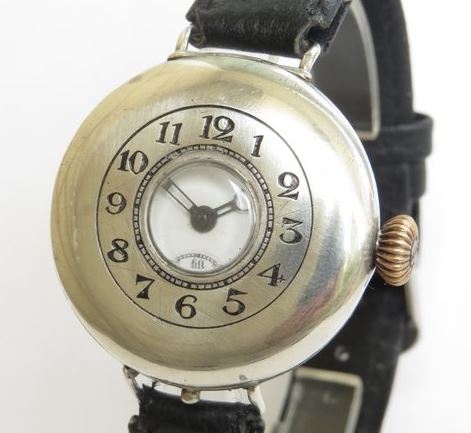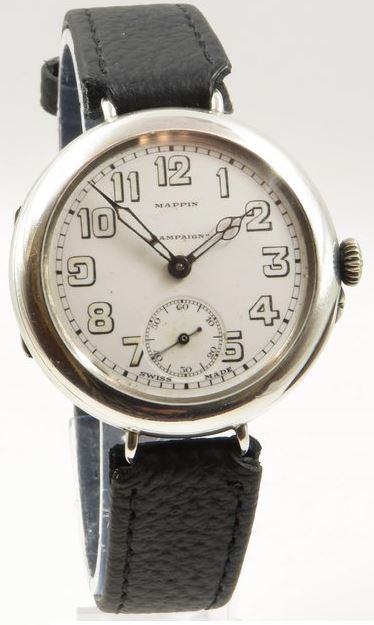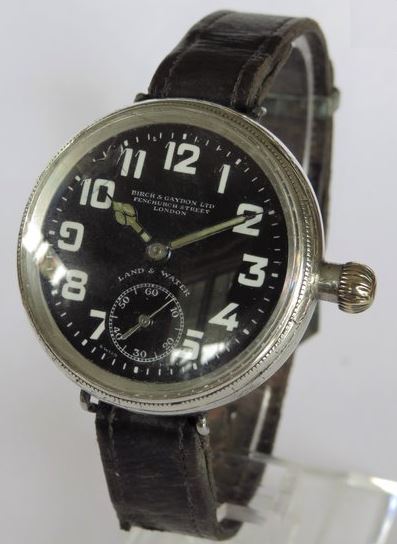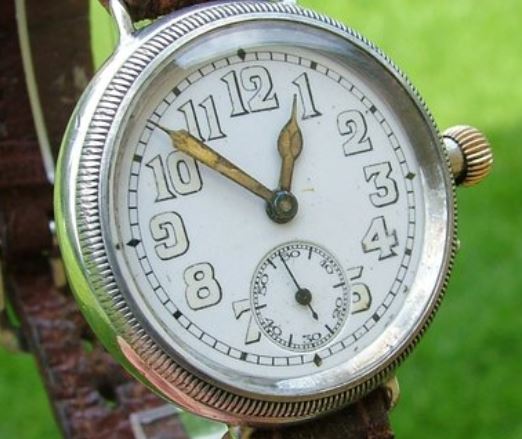The trench watch evolved during World War I when the traditional pocket watch was found to be impractical during trench warfare. The first trench watches appeared during the Boer War in the late 19th century. Before then the wristwatch or wristlet as it was known, was considered feminine. This stemmed from the earlier inaccuracies of wrist-worn timepieces. Early watches were highly susceptible to variations in temperature, dust, water and the positional effects of gravity. A pocket watch that stayed protected in an upright position in a pocket gave the most consistent time. A lady’s wristlet that moved constantly as the user moved their hand was less accurate. For the men of the period, a watch was a tool, for the ladies an ornament.
Wristwatches
There is some debate over who created the first-ever wristwatch. The earliest documented claim by a noted watchmaker was in 1810 by Abraham-Louis Breguet who produced a wristwatch on commission for Queen Caroline of Naples. However, Elizabeth I of England reportedly received an ‘arm watch’ as a gift from Robert Dudley the Earl of Leicester, in 1571. Another claim was by Swiss watchmaker Patek Philippe who crafted a timepiece for Countess Koscowicz of Hungary in 1868. Hans Wilsdorf, the founder of Rolex, was also an avid supporter of wristwatches. He was producing them for men long before they were popular.
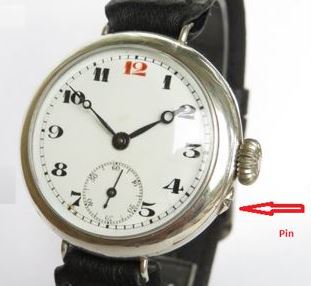
Towards the end of the 19th century, the mechanism used by most watches improved considerably with respect to timekeeping. The positional effect of gravity was no longer such a problem. Timing, during warfare, became important, particularly when trying to coordinate attacks against well-organised troops such as the Boers. Soldiers began to wear modified pocket watches on their wrists, with lugs soldered on that allowed wrist straps. These were much easier to access than a pocket watch that was stored in a tunic. A soldier could aim their rifle, and turn their wrist to tell the time, rather than dig through their tunic pockets for their watch. Pocket watches continued to be used by the pilots in the Royal Flying Corps. The name “wristlet” was used until the early 1930s and was eventually replaced by the modern name “wristwatch”.
Illumination
Once World War I started, there were specialist wristwatches designed for battle. It soon became evident that illumination was required to tell the time in poor light. It could be fatal if a soldier needed to light a match to tell the time in the dark, as they could become the target of snipers. A luminous dial was developed using radium paint. The hour markers could be marked using the new paint, which allowed soldiers to tell the time in the dark. This was crucial to allow soldiers to coordinate their movements in line with the barrages of artillery. This was particularly crucial to align with the timings of the creeping barrages that required soldiers to move behind an artillery attack that moved forward. A mistimed movement of troops could result in casualties caused by friendly fire.
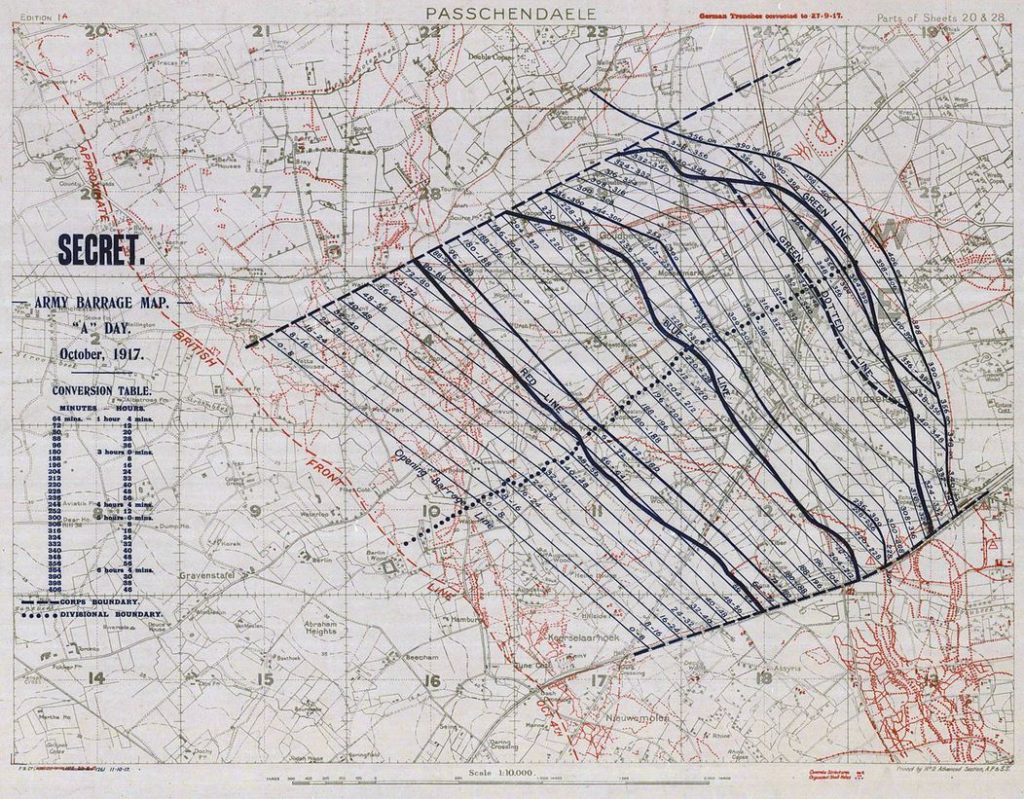
The luminous paint glowed because of a reaction between the zinc sulphide phosphor in the paint mixture and the gamma rays emitted by the radium. The glow was so luminous it could be noticed in daylight. Initially, the paint was added in small dots on the dial and the hands. As the war progressed the numerals and the hands were completely painted.
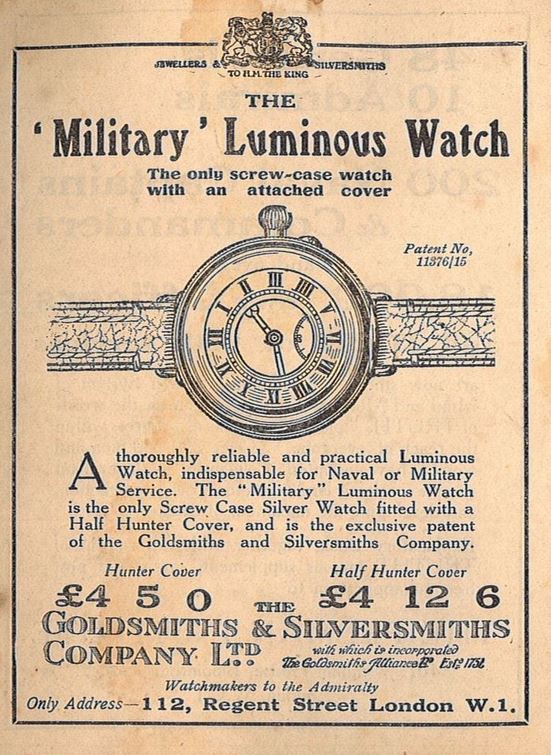
Radioactivity
The dials would have to be repainted every few years as the phosphor degrades quickly under the constant gamma-ray barrage of radium. The same cannot be said about radium, it has a half-life of 1600 years, so it remains very much radioactive. This does create a dilemma for the trench watch collector as their prized possession is constantly emitting potentially dangerous radiation. Even those watches where the paint has been removed will still contain traces of radium beneath the lens. Dropping the watch and shattering the lens could result in fine radioactive particles being drawn into the lungs. Be careful. If you collect trench watches, beware of the radioactive material and never let them near children.

Many early trench watches were modified pocket watches that had wire lugs soldered onto them to allow a wrist strap. Quite often the straps were long enough to allow them to fit over a greatcoat. They also included shrapnel guards, which were supposed to protect the delicate crystal lens. Other trench watches converted from pocket watches included hunter and half-hunter cases.
Wristlets
Prior to the Great War, the pocket watch was considered the only timepiece suitable for men. Wristwatches were called ‘wristlets’ and were considered ornamental and feminine. As the soldiers returned from the war wearing their new wristlets, the trend became acceptable. At the war’s end, the surplus of trench watch movements meant that wristlets were being produced into the 1920s with movements dated from the war years. The term ‘wristwatches’ didn’t become mainstream until several years after the war had finished.
If you are collecting trench watches, be mindful of the radioactive paint and also understand that the date of movement doesn’t always reflect that the watch came from the war period. I generally look at the hallmarks on the case, rather than the movement to determine if the watch could be a genuine trench watch. Even then, with a Silver hallmark within the war years, there is no guarantee that the watch ever saw the inside of a trench. Genuine provenance is required as reasonable proof, this would generally be proof of ownership by a serving soldier.
Dial colour
Black dials are considered an essential feature of modern military watches, but this wasn’t always the case. During World War 1, the majority of trench watches had white dials, which were much clearer and easier to read than black dials. Officers who purchased trench watches had the choice between black or white dials. However, based on surviving examples of trench watches, they clearly preferred white dials, which were more visible in the dim lighting conditions of the trenches.
While black dials have a serious aesthetic appeal that may be appropriate for a modern timepiece, the reason behind the colour choice tends to have a more practical reason in a military sense. Simply put, black dials are less reflective and therefore harder for an enemy sniper to spot, which was a consideration during the Great War when sniping was used by both sides. The luminous paint that was an essential feature of a trench watch made the hands and numbers of a watch with a white or black dial stand out. To avoid being spotted by the enemy, officers were advised to cover their watches when in visible positions.
However, officers mostly checked their watches in the dim, pre-dawn light in the trenches just before an attack. During these situations, they were not visible from the enemy trenches, and the most crucial factor was a clear dial that was easy to read. This explains why most trench watches had white dials.
Black dials may have become more important for commando-style raids, where participants needed to be concealed from the enemy. Under these conditions, a white dial would be unacceptable, and a black dial would be preferred.
Cost
Throughout World War I, trench watches were highly sought after by millions of troops on all sides of the conflict, who recognised their importance in helping them become better soldiers and living longer. Unfortunately, wristwatches were not issued as standard military kit except for select signal corps members, so soldiers were expected to purchase their own.
The main obstacle to owning a decent trench watch was its cost. Trench watch advertisements from the period indicate that the cheapest wristwatch a British soldier could realistically hope to buy was around £2. However, better quality timepieces with additional features often sold for between £4 and £5.
To put these prices into perspective, the average British infantry private earned only 1 shilling a day during the Great War, which equates to just £1.5 per month. As a result, a trench watch was too expensive for most enlisted men.
On the other hand, British officers were far better compensated than their subordinates. A British infantry lieutenant could expect to receive a generous salary of 8 shillings and 6 pence a day, or £12.75 per month, which was more than eight times the salary of a private. Consequently, the officer corps – lieutenants, captains, majors, and colonels – constituted the primary market for trench watches during the conflict.
However, despite their cost, many enlisted soldiers still coveted trench watches. Some lower-ranked soldiers received wristwatches as gifts from friends or family, while others saved diligently in order to purchase one. Many trench watches were also “liberated” from captured enemy soldiers or even looted from the corpses on the battlefield.
I am looking at adding trench watches from Asprey, Garrard, Birch & Gaydon (Land & Water) to my collection.
